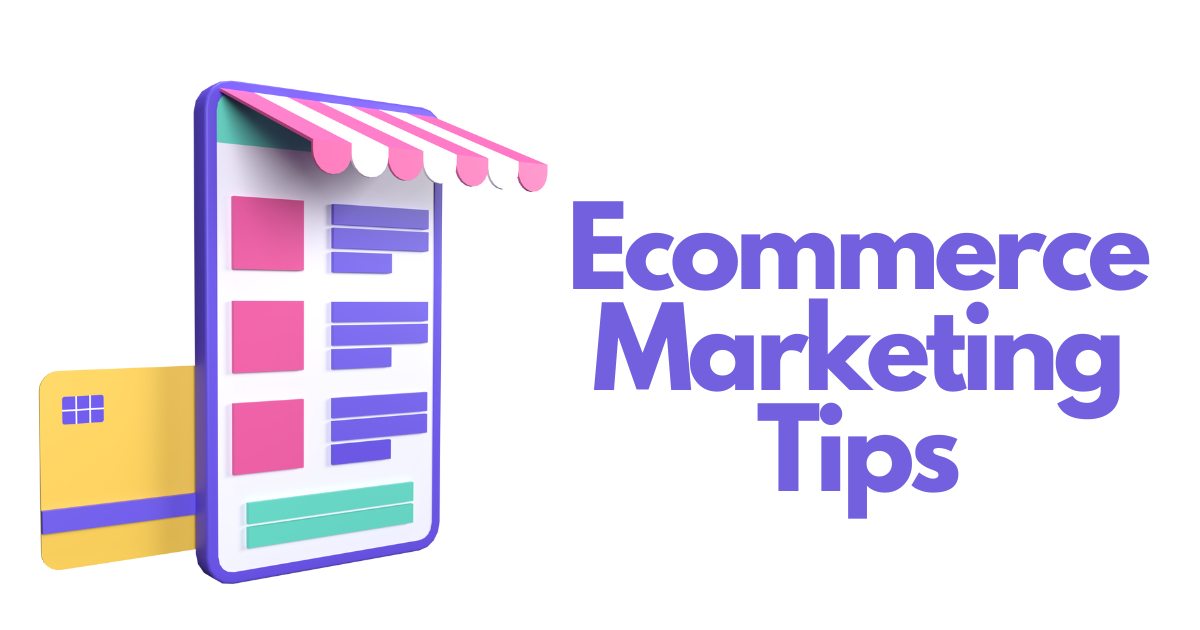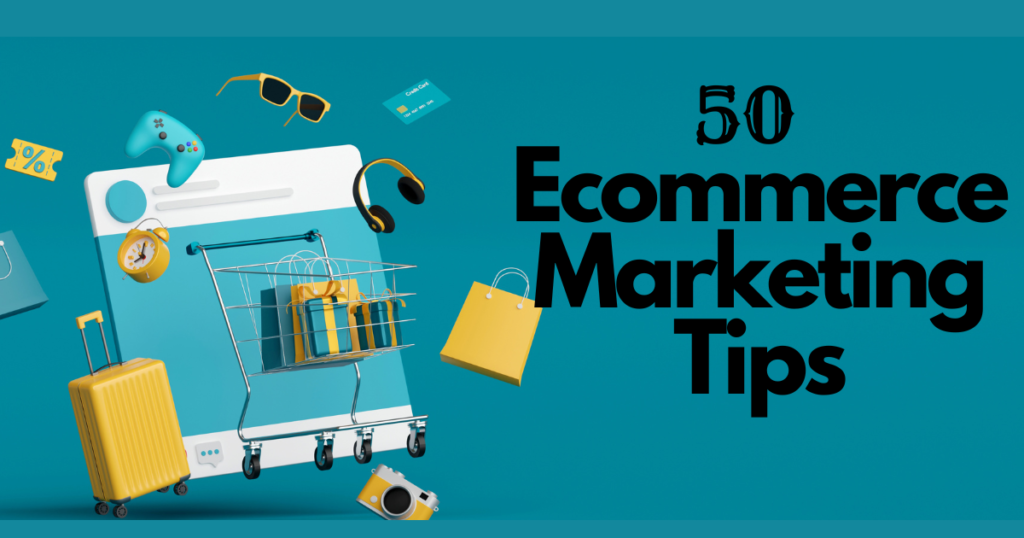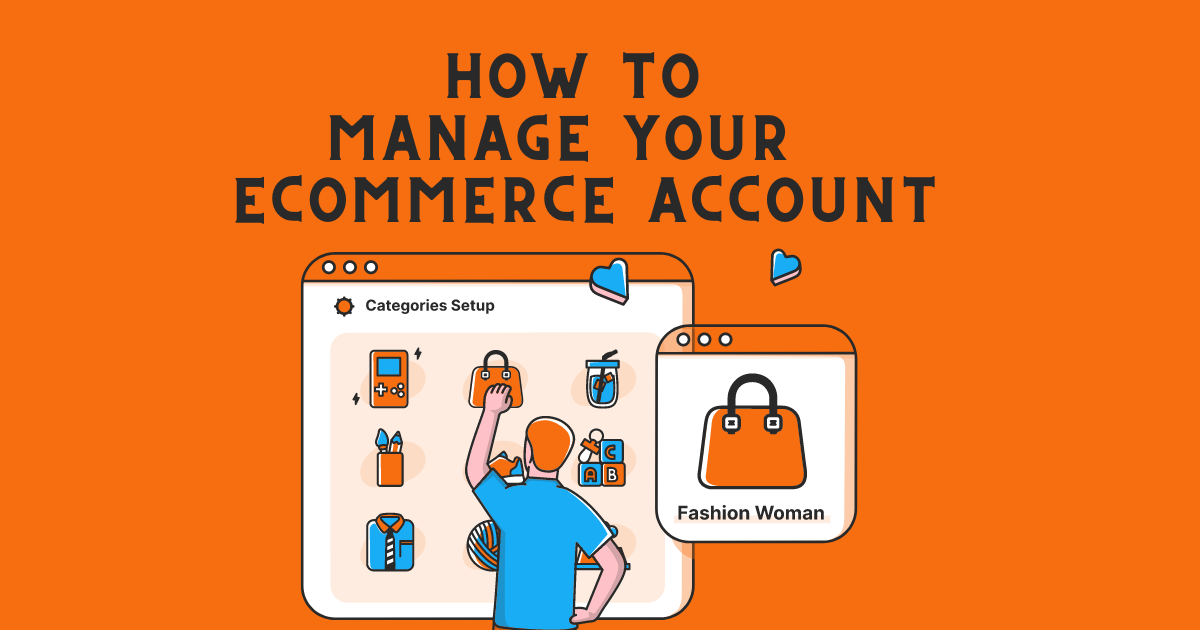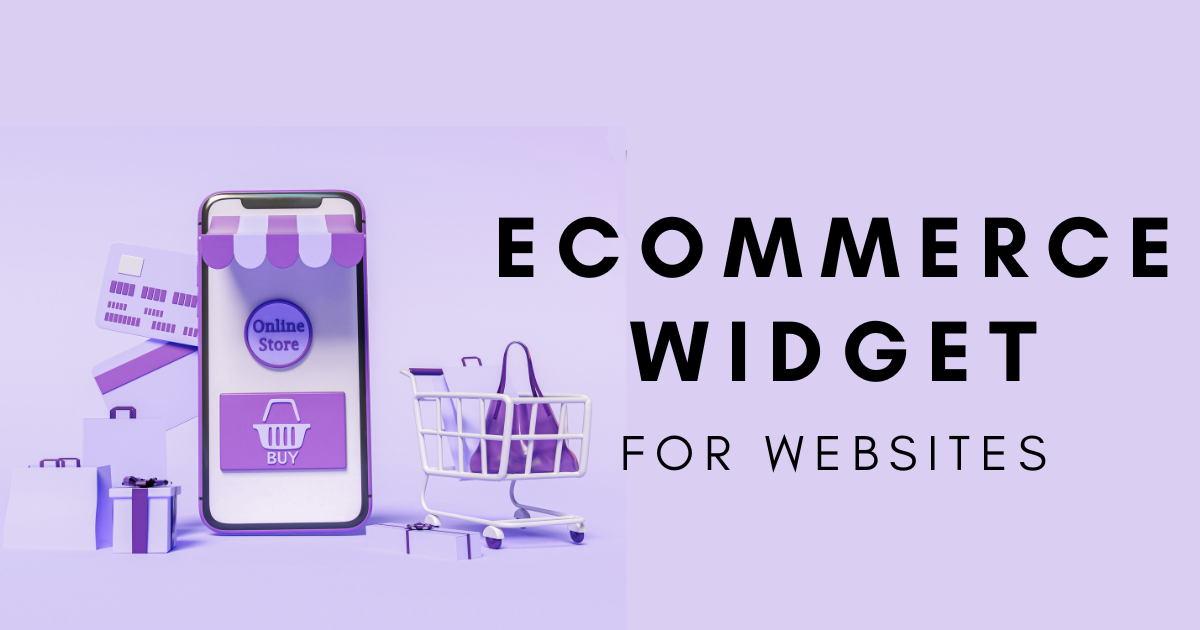If you are a business owner, you need these unbeatable ecommerce marketing tips to elevate your game.
Whether you’re aiming to boost brand awareness, grow a robust customer base, or get one up on the competition, you’re in the right place. And if you’re on the hunt for extra hands to manage the daily grind, this guide’s got you covered too.
The truth hits eventually: Nailing your ecommerce marketing strategy isn’t just a nice-to-have; it’s a must-do. It’s the secret sauce for standing out, earning customer loyalty, and leading the charge in your market niche.
Kick things off by evaluating your current marketing mix.
-
Is it delivering results
-
Or is it time to go back to the drawing board?
Asking these tough questions can open the door to new strategies that invite more commitment and loyalty from your audience.
Let’s face it, ecommerce is no walk in the park. Because of this, I’ve rounded up 50 unbeatable ecommerce marketing tips that promise to set your business apart and dial up the brand recognition you’ve been chasing.
Today, discover how to make your ecommerce business not just survive, but thrive.
50 Ecommerce Marketing Tips Everyone Should Know

Below are the 50 Ecommerce marketing tips for ecommerce sales that you can apply to your business to increase brand awareness.
1. Build A Content Marketing Strategy
In the same vein that every product passes through a production process, it is essential to note that ecommerce needs a content marketing strategy to work with.
All you need to do is plan a list of all the methods to get across to your customers, whether it is going to be a blog post, newsletters, or videos.
Also, endeavor to evaluate this strategy on a weekly basis or monthly basis in order to know how the content is created and how the process of distribution works.
2. Launch an Automated Email Marketing Effort
At the heart of a kick-ass ecommerce marketing strategy lies email marketing, the ace in the hole for nudging your customers towards another purchase.
Let’s face it, folks check their emails daily, ads and all. So, why not tap into this habit? Roll out an email marketing campaign to keep the conversation going with your customers. Make sure each message packs value, offering the insights and info they need to make the leap and buy your product.
3. Diversify Your Platforms with Social Media
Navigating social media as an ecommerce brand can feel like walking through a maze. Finding the right platform that clicks with your market is no small feat since not all social spaces are a slam dunk for online selling.
Here’s a straightforward strategy: Don’t put all your eggs in one basket. Experiment across various platforms—think Facebook, X, Pinterest—and let social media analytics guide you. Which platform is bringing in the results?
But here’s the kicker—even if you pinpoint a clear winner, broadening your social media footprint has its perks. It’s about being where your customers are, making those connections that count.
Imagine you’ve got a modest 90 followers on X, but among them is your top shopper. Drop X from your strategy, and you might just lose that VIP customer.
Diversifying isn’t just about spreading your message; it’s about safeguarding those valuable connections.
4. Put into Action your Personalization Strategy
Personalization tops the chart when it comes to marketing magic. Nobody wants to throw their money at a brand that feels as approachable as a brick wall.
Personalizing your approach means intertwining your brand’s identity with a human touch, maybe spotlighting one or two key individuals as the faces of your business.
It’s the little things in personalization that ramp up customer loyalty and make your audience feel seen and special. This could be as simple as greeting your customers by name in emails, sharing behind-the-scenes videos of your product in the making, or showcasing your team members in action.
Thankfully there are such a thing as CRM tools. These tools are invaluable for keeping your customer data neat and accessible, enabling you to tailor your communications and interactions in a way that feels personal and genuine to each customer..
5. Create Content
Crafting original content is like laying down a bridge between your business and your customers—a bridge built on trust and engagement.
The content marketing strategy playbook gives you a clear shot at choosing between original and recycled content.
But here’s the deal: original content, be it videos, podcasts, blog posts, or even ebooks, turns your ecommerce site into a treasure trove of insights and information. It’s about becoming the go-to spot for anyone hungry for knowledge on what you’re selling.
Sure, many companies take shortcuts, pulling content from the web to plug into their ecommerce SEO strategies. It might save time for other business operations, but let’s be real: it doesn’t pack the same punch as original content. Originality breeds connection and loyalty that no copy-and-paste job can match.
6. Master the Art of Contextual Marketing
Contextual marketing wears many hats, but for the ecommerce world, it’s all about striking the perfect chord with your audience.
This strategy is laser-focused on delivering marketing content that not only resonates with your demographic but also lands in their lap exactly when they need it.
It’s the ultimate goal of ensuring your messages are not just seen but are also relevant and timely, making that connection with your audience feel natural.
7. Invest in User Generated Content
The most wonderful way or method to start up or build interaction with your customers is to make use of user-generated content.
It is way better than of investing a lot of money and time into the marketing campaign from your own site.
8. Execute An Allegiance Program
A loyalty program or an allegiance program helps make your customers keep coming back, whether to your company or to your store.
Why?
It makes them feel recognized and appreciated for spending their hard-earned money on your company. It will ultimately convince your customers that they are most loyal to spend more money and receive an award for doing so.
10. Use Customer’s Native Language to Reach Out to Them
E-commerce stores usually sell items for people of different languages all over the world. But you need to know that because you speak and deal in English doesn’t mean you cannot sell a product to someone who speaks Dutch.
It is important to ensure the provision of translation features on your online store in order to reach out to your foreign customers.
However, most of the e-commerce platforms, WooCommerce templates, and WordPress e-commerce themes make provision for translation settings so that people from other countries who might not understand your language will not be left out in any way.
11. Implement A/B Testing on Your Checkout Process
Regularly reviewing your checkout process isn’t just good practice—it’s a goldmine for boosting sales. Understanding which words or phrases coax shoppers into making a purchase can significantly uplift your conversion rates.
But here’s the kicker: diving into ecommerce marketing without A/B testing is like sailing without a compass. Essential, A/B testing across your checkout process sheds light on critical moments, such as where potential buyers ditch their carts or hit a snag with payments.
This insight is invaluable for smoothing out those bumps and making the path to purchase as sleek as possible.
12. Make Your Ecommerce Site Mobile-Friendly
Optimizing for mobile isn’t just about launching an app or crafting a separate mobile website. Nowadays, customers value how responsive and user-friendly a site is on their mobile devices more than the convenience of a dedicated mobile site.
What really matters is implementing a responsive design that ensures your ecommerce site adapts seamlessly to smartphones and tablets.
This approach guarantees a smooth shopping experience across all devices, keeping your site attractive and accessible to the mobile shopper.
13. Consider Mobile Advertising
Giving special consideration to mobile advertising enables mobile-ready ads and geolocation to be combined with mobile advertising.
This helps your customers to be connected to your store while they are hanging around somewhere.
14. Leverage Psychological Pricing
Psychological pricing isn’t just a trick; it’s an art form in ecommerce. This strategy goes beyond simple discounts or sales—it taps into the way customers perceive prices and how these perceptions drive their purchasing decisions.
At its core, psychological pricing makes use of pricing tactics that make a product’s price appear more attractive. For example, pricing items at $19.99 instead of $20 can make a significant difference in customer perception, making the price seem considerably lower than it actually is.
Another tactic is using charm pricing, where prices end in an odd number, like 7 or 9, which are often seen as more appealing and thus, more effective in encouraging purchases.
But it doesn’t stop there. Implementing tiered pricing strategies, where you offer products at multiple price points, can cater to different segments of your market. This not only increases the perceived value of your offerings but also provides options for customers at various price sensitivities.
Incorporating psychological pricing into your ecommerce strategy requires a keen understanding of your target audience and their buying behavior. It’s about presenting your prices in a way that appeals to their sense of value, making your products irresistible.
This nuanced approach can lead to increased sales, improved customer satisfaction, and a stronger bottom line for your ecommerce business.
15. Employ a Content Writer to Create Long Form Content
Having long-form content tends to take a lot of time because it dives into sometimes boring details and topics and is a wonderful way to stand out compared to any other post out there.
But for some people, it is necessary to employ someone efficient to write this long-form content in order to make it engaging and also useful for most users who are interested.
16. Make Use of Social Ads for the Ideal Testing Atmosphere
Making use of social ads is a great idea because there will be no single need to spend any money to test the put.
For instance, with the use of Facebook, you are able to send a lot of posts out on your business page, and the moment the post starts to receive numerous comments and likes, and most likely in all situations, that is what customers are always interested in.
The moment you are able to identify a successful post, you can now spare a little cash on the same post as ads.
17. Infuse Your Brand with Your Unique Personality
Injecting your unique personality into your brand is crucial in today’s market, where customers crave connection with the faces behind the brands. They’re eager to hear your story, to feel the pulse of your passion through every page, post, and pixel.
But here’s the rub: If you’re teaming up with content creators or designers, maintaining a consistent brand voice can get tricky. That’s why crafting a content style guide becomes your secret weapon. This guide is your playbook for ensuring everyone’s on the same page—whether you’re aiming for a vibe that’s all about fun, professionalism, or something in between.
By establishing clear guidelines, you not only preserve the essence of your brand’s voice but also forge a deeper, more authentic connection with your audience. It’s about making sure that every word reflects the heart and soul of your brand, turning every interaction into a chance to showcase your unique flavor.
18. Spotlight Your Authors
Unveiling the authors behind your content is a smart move to navigate the challenge of maintaining a unified brand voice.
While operating under a singular brand name has its perks, your audience often craves a peek behind the curtain—to see the faces and learn the names of those contributing to your blog or video channel.
This strategy doesn’t just add a layer of personalization; it humanizes your brand. By highlighting the individuals, from the writers crafting your articles to the crew working magic behind the scenes, you open up a new dimension of connection.
It’s a gesture that invites your audience into a more intimate circle, letting them feel a part of your brand’s community. This transparency fosters trust and loyalty, making your content not just seen but felt.
19. Craft a Mascot for Your Brand
Creating a mascot as the face of your company is a strategic play that can weave a compelling narrative around your brand. This isn’t just about choosing any character but designing a fictitious figure that embodies your brand’s ethos, values, and spirit.
A well-crafted mascot becomes a symbol that customers can easily recognize and emotionally connect with, bridging the gap between a corporate entity and its audience on a more personal and relatable level.
This approach taps into the power of storytelling, allowing your brand to communicate its message in a fun, memorable way. Whether it’s through marketing materials, social media, or your website, a mascot can provide consistency across various platforms while making your brand more approachable and engaging.
Think of it as adding a friendly face to your digital presence—one that represents your brand’s personality and becomes a familiar, trusted friend to your customers. This creative embodiment of your brand can significantly enhance customer loyalty, differentiate you from competitors, and add a unique flavor to your marketing efforts.
20. Make use of Online Discussion Areas to Build Authority
Leveraging online forums is a classic yet potent tactic for cultivating a community around your ecommerce store. The familiarity of this format to a broad audience makes it an excellent ground for fostering engagement and dialogue.
Platforms like chat areas, forums, and message boards are not just spaces for conversation. They’re goldmines for unique, user-generated content that can pull traffic to your store.
These forums can elevate your ecommerce site to a hub of authoritative discussion, where your brand isn’t just a vendor but a thought leader and a gathering point for enthusiasts and customers alike.
By actively participating in or hosting these online discussions, you create an ecosystem where your ecommerce store transcends its commercial purpose. It becomes a destination for insights, advice, and community—a powerful strategy to build credibility and authority in your niche.
21. Customize Every Interaction
Kicking off with personalization might seem straightforward at first. Yet, when you tally up the several emails your ecommerce store dispatches—from confirmations to receipts—the challenge of maintaining a personalized touch becomes evident.
Here’s the key:
-
Elevate your customer interactions by weaving personalization into every communication.
-
Use their names, not just as a token gesture, but as a way to genuinely connect.
-
Encourage replies to your emails, making it clear you’re not just a faceless brand, but a team of real people eager to engage.
-
Don’t forget to include links that cater to their interests and past interactions for that extra layer of customization.
This approach isn’t just about being courteous; it’s a strategic move to make every customer feel seen, valued, and understood.
By personalizing the mundane—be it a receipt or a confirmation email—you transform every touchpoint into an opportunity to deepen the relationship with your customers.
22. Ensure Your Delivery Options is Better Than Others.
To ensure your company stands out when it comes to delivery, you need to start thinking of ways to speed up the delivery process. This is easy way to create brand awareness and also stand out from other competitors.
23. Focus on Local Branding and Marketing
Although local branding does not really work with an ecommerce marketing plan, if your company or business has a connection with brick-and-mortar stores, it is essential at this point to pay attention to local branding and marketing.
All you need to do is to reach out to customers who are closer to your store with your geolocation tool and also local search engine targeting.
24. Keep Customers Coming Back with Automated Marketing Tactics
Finding a strategy to make your customers eager for a return visit is crucial, and automated marketing techniques can be a game-changer here.
Imagine the delight of receiving a personalized birthday or anniversary message from a brand you love. That’s the kind of thoughtful touch that can make a big difference.
But it’s not just about those once-a-year moments. Automated messages can kick in right from the get-go—welcoming new subscribers to your email campaign or thanking customers post-purchase. These automated touches at various stages of the customer journey can significantly enhance the customer experience.
The investment? Your time. Setting up these automated communications shows your customers that you value the relationship beyond the transaction. It’s a proactive approach to customer engagement that can turn first-time buyers into loyal fans.
25. Make Video Tutorials for Creating a Connection and Showing Products
Creating video tutorials for your products isn’t just educational; it’s a dynamic way to bond with your customers. These videos can transform the way shoppers interact with what you sell, making the experience both engaging and informative.
Take a mixing machine, for example. Not all customers will intuitively know the best way to use it, nor the variety of results they can achieve with different settings. By producing a tutorial that walks them through its operation, showcasing various techniques and outcomes, you’re not just selling a product; you’re offering a valuable experience.
Such tutorials do more than educate; they reassure your customers about their purchase decision. This level of support and insight can turn casual browsers into loyal shoppers, ensuring they not only return to your store but also trust in the quality and utility of your offerings.
26. Be Creative with Your Frequently Asked Questions page
Revamping your FAQ page can do more than just provide answers—it’s a prime opportunity to reflect your brand’s personality and culture. While it’s true that FAQ pages are hotspots for visitor traffic, they often miss the chance to showcase the unique vibe of your company.
Take a moment to think: Do you want your brand to come across as strictly professional, or are you aiming for a more laid-back, even quirky tone? The way you craft your FAQs can significantly influence how customers perceive your brand.
Injecting your company’s character into this section can make a substantial difference. Whether it’s through the tone of the answers, the use of visuals, or even incorporating humor, your FAQ page can be a window into what makes your brand special, turning a simple informational page into a memorable part of the customer experience.
27. Enhance Content with Engaging Images
Peppering your content with images isn’t just about aesthetics; it’s a strategic move to draw readers in. Visuals have the power to transform static text into an engaging journey, increasing the likelihood of clicks and thorough engagement with your content.
However, the key to truly captivating your audience lies in the quality and originality of these images. Professional, eye-catching photos that resonate with your message can make all the difference. They not only enhance the visual appeal of your content but also reinforce your brand’s identity and values.
Steer clear of stock photos whenever possible. Custom imagery not only avoids the impersonal feel of stock images but also provides a unique opportunity to showcase your products, team, or any aspect of your business in a more authentic and intriguing light.
This approach not only grabs attention but also fosters a stronger connection with your audience.
28. Transform Your Company into Its Own Media Outlet
It is possible to transform your company into its own media outlet by sharing your original content on various media outlets, not necessarily until a magazine or TV channel is created
29. Be Current on Industry News
Being up-to-date or current on industry news gives room for powerful content ideas that can be shared with customers.
However, the powerful content ideas you come across might sometimes be a bit complex for consumers to understand. At this point, it is your job to simplify the powerful content ideas and make them easy to digest.
30. Generate Discussion by Welcoming Controversial Topics
You can start by welcoming controversial topics and asking questions that will lead to discussions like the following:
-
Do you sell gun bullets on your ecommerce website?
-
Do you always create a blog post that promotes the freedom to carry weapons?
But looking at these questions, you will realize that they are questions that are too one-dimensional. Most of the customers you have are usually quick to pick arguments from all sides, so it will be a good idea to create content that is controversial and will stir up people into discussion.
31. Don’t Cater to Search Engines
Shifting your focus to garnering social media shares rather than obsessing over keyword optimization can be a game-changer for your content strategy.
Social shares are gold—they amplify your reach, boost engagement, and enhance your visibility far beyond the capabilities of traditional SEO tactics alone.
Creative content and catchy headlines are your best allies in this approach. They’re not just hooks; they’re invitations for your audience to interact with and spread your message across their networks.
This strategy doesn’t just aim for a fleeting appearance on a search engine results page; it seeks to embed your brand into the conversations and communities that matter most to your audience.
By creating content that resonates deeply with your followers, encouraging them to share it with their own circles, you tap into the viral potential of social media. This not only increases your content’s exposure but also builds a community around your brand, driven by genuine interest and engagement.
32. Wisely Use Pay-Per-Click Marketing
It is vital to use pay-per-click marketing because you will discover that it is very cheap if it is used correctly and wisely.
It is also essential to run numerous campaigns and ensure they are tested until the ideal option is found.
33. Launch into the Reddit Pool
Reddit is generally known as a huge forum that discusses everything, from bikes to romantic fiction, but most people are not aware that the same Reddit platform offers advertising opportunities.
However, it is vital to locate subreddits that relate to your industry and endeavor to get them inserted into your ecommerce marketing strategy.
34. Upsell Your Products without Over-Upselling
Upselling your products without having to push hard is very crucial because it makes you offer your online visitors product links that are relevant. Still, it is essential to avoid constant upsells.
35. Switch on the Image Boosters with Instagram
Once you’ve captured your product photos, turning on the image boosters and diving into Instagram can be a masterstroke.
Instagram offers a unique space to not only display your products but also to bring them to life through customer reviews, user-generated content, and dynamic action shots. This approach does more than just present your items; it tells a story, inviting viewers into the experience of using your products.
By using Instagram’s suite of editing tools and features, you can enhance your photos to capture the essence and quality of your products, making them irresistible to your audience.
This strategy leverages the platform’s visual-centric nature to build a compelling narrative around your brand, encouraging engagement, shares, and ultimately, conversions.
36. Tackle Cart Abandonment with Strategic Tools
Employing tools such as A/B testing and user experience (UX) testing can significantly reduce cart abandonment rates. These tools serve a crucial role in pinpointing exactly why customers might be bouncing from your checkout page. By analyzing user behavior and testing different elements of your ecommerce site, you can understand the hurdles or friction points that lead to abandoned carts.
Armed with this insight, you’re equipped to make informed adjustments, whether it’s simplifying the checkout process, offering more payment options, or enhancing site speed. The goal is to create a seamless, hassle-free shopping experience that keeps your customers engaged from start to finish.
In essence, these tools are not just about keeping your brand top-of-mind; they’re about refining your online store to meet—and exceed—customer expectations, ensuring they have no reason to leave without completing their purchase.
37. Launch Stores on Multiple Platforms
Selling your items on platforms like eBay, Etsy, Amazon, and Facebook will give you more revenue streams and allow you to attract more customers.
38. Optimize Your Email Capture Strategy
Fine-tuning your email capture modules can significantly boost your subscriber numbers. Implementing A/B testing on elements like your email capture popup can reveal what truly resonates with your audience.
Perhaps the current design or timing of the popup is more of a deterrent than an incentive. By testing different approaches, you can discover the sweet spot that encourages more sign-ups rather than turning potential subscribers away.
Consider enhancing the deal with a value-added proposition. Offering a free ebook or a special promotion as a thank-you for signing up can transform a hesitant visitor into a willing subscriber. It’s about creating an exchange that feels worthwhile to the customer, turning a simple action into a gateway for ongoing engagement with your brand.
This strategic refinement of your email capture approach not only grows your audience but also lays the groundwork for a stronger, more interactive customer relationship.
39. Prioritize Your Email Newsletter Effort
Treating your email newsletter with the utmost importance is vital, as it opens up a channel for sharing personal messages and unique content directly with your audience.
Recognize that an email newsletter, distributed weekly or monthly, isn’t just another item on your digital marketing checklist. It’s a powerful tool for building relationships, providing value, and maintaining engagement with your subscribers.
Incorporating influencer marketing into your newsletter strategy can add a dynamic layer to your content. Featuring interviews, endorsements, or collaborative pieces with influencers in your industry not only spices up your newsletters but also leverages the influencers’ credibility and reach.
This approach can significantly enhance your brand’s visibility and attractiveness, making every newsletter a much-anticipated piece of communication that your subscribers are eager to open, read, and share.
40. Nudge Customers About Their Wishlist
Wishlists represent a goldmine of potential sales, capturing the desires of customers at a moment of interest. Yet, without a nudge, these items can easily slip into oblivion.
Proactively reaching out to your customers with gentle reminders about their wishlist items can reignite that initial spark of interest, encouraging them to take the final step towards purchase.
This strategy not only boosts sales but also personalizes the shopping experience, making customers feel valued and understood.
41. Simplify the Path to Purchase
The journey from interest to purchase should be as seamless as possible. Customers appreciate a straightforward, hassle-free process that gets them from point A to point B with minimal friction.
Streamlining the number of steps required to make a purchase can significantly enhance the customer experience, potentially increasing conversion rates. Testing is crucial here; it’s the only way to identify and eliminate unnecessary steps without compromising the quality of the customer journey.
This approach ensures that your ecommerce site is not just easy to navigate but also effectively meets customer needs, encouraging feedback and repeat business.
42. Motivate Customers to Leave Product Reviews
Encouraging your customers to post reviews lends your brand invaluable social proof, boosting the confidence of potential buyers. Think about how often high ratings and glowing testimonials have swayed you.
User feedback not only enhances your product’s appeal but also serves as a direct line to customer satisfaction and areas for improvement.
43. Explore Free Marketing Avenues
Maximizing free marketing opportunities means keeping an eye out for influential blogs within your niche that boast substantial followings. Every business, regardless of size or industry, can find relevant platforms willing to feature or discuss their products.
This approach leverages existing audiences and can drive significant traffic and interest to your brand without the upfront costs of traditional advertising.
44. Engage Directly with Your Site Visitors
Creating avenues for real-time interaction with visitors elevates the customer experience. Implementing a live chat feature on your e-commerce site and actively engaging with comments on your social media channels are effective strategies.
This direct line of communication not only addresses customer inquiries and concerns swiftly but also humanizes your brand, building trust and loyalty.
45. Implement Ratings in Your Discussion Forums
Incorporating a rating system within your discussion forums can enrich user engagement. This feature allows participants to earn recognition, such as badges, for their contributions, fostering a sense of community and encouraging more interaction.
Such gamification elements can make the discussion more dynamic and valuable, leading to increased customer involvement and content generation.
46. Use Reports to Forecast Future Sales
Leveraging reports is critical for understanding and shaping your future ecommerce marketing strategies. These insights allow you to identify both the strengths and weaknesses of your current approach, guiding you in making informed decisions to enhance performance. Without such data, pinpointing areas for improvement or capitalizing on what’s working well becomes a guessing game.
47. Conduct Regular Market Research
Before launching a new product, the uncertainty of customer reception can be daunting. To navigate this, commit to regular, monthly market research.
This proactive approach enables you to gauge customer interest, collect feedback, and refine your product based on actual user experiences. Such ongoing research keeps you closely aligned with your market’s needs and preferences.
48. Leverage Product Reviews through Donations
Sending out sample products for review can significantly increase your chances of gaining exposure. This gesture not only facilitates detailed reviews from writers and editors but also acts as a courteous gesture, potentially speeding up the publication process.
This strategy is a win-win, offering valuable feedback and enhanced visibility for your product.
49. Strategize Your Onsite Search Engine Optimization
Onsite SEO is a cornerstone of your ecommerce visibility. It requires a well-thought-out strategy that includes the use of relevant keywords, ensuring your store ranks prominently on search engines for the products you offer.
This involves optimizing your site’s content, structure, and metadata to make it more attractive to search engines and users alike.
50. Organize Giveaways to Boost Engagement
Hosting a giveaway is a fantastic way to engage your audience and increase your social media presence. Encouraging participants to share or like your posts for additional entries can virally amplify your reach.
This strategy not only engages your current audience but also attracts new followers, creating a buzz around your brand and products.
Ready to Implement these Unbeatable Ecommerce Marketing Tips?

In wrapping up, these 50 strategies unfold a comprehensive blueprint for elevating your ecommerce business.
From leveraging advanced tools and analytics to foster a deeper understanding of your sales patterns, to embracing regular market research for product validation, each tip is a stepping stone towards a more robust and dynamic ecommerce presence.
Encouraging customer reviews, optimizing your onsite SEO, and engaging your audience on social media platforms with giveaways are just a few ways to foster a vibrant, interactive community around your brand.
Remember, the core of ecommerce success lies in understanding and responding to the needs and preferences of your customers, all while delivering exceptional value.
By implementing these strategies, you’re not just aiming for short-term gains but are building a foundation for sustained growth and customer loyalty in the bustling world of ecommerce.




















